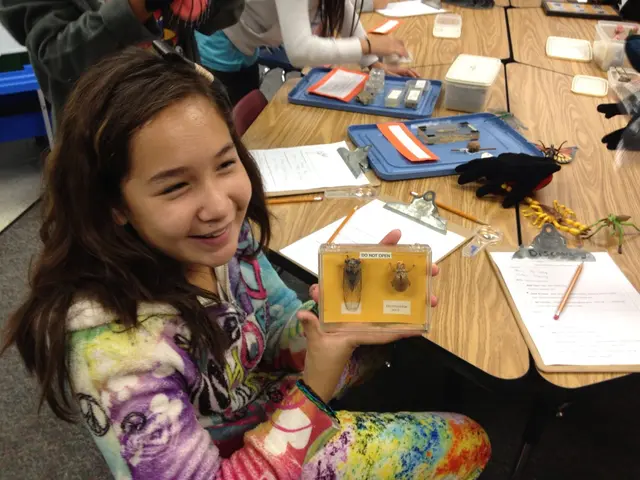Repetitive In-app Acquisition Spurred by Gamification Methods (Supported by Authentic Scenarios)
Gamification, a technique that uses game-like elements to motivate user behaviour in non-game environments, is increasingly being adopted by businesses to boost customer retention and loyalty in mobile apps. This strategy transforms shopping and engagement experiences into interactive, rewarding, and enjoyable ones, leading to higher repeat purchases.
Key ways gamification fosters repeat purchases include:
- Enhancing Customer Engagement and Enjoyment: Gamified experiences make shopping or app usage fun and rewarding, nudging customers toward checkout and completion of abandoned carts by offering rewards like discounts or coins earned through gameplay. AliExpress’s “Bubble Challenge” is a prime example, where users can earn coins that lead to discounts.
- Building Habit and Loyalty: Features such as badges, levels, streaks, and progress indicators give users a sense of accomplishment and progression, which psychologically encourages repeated app use and reduces churn. Starbucks Rewards, Duolingo, Flipkart's SuperCoins, and Nike Run Club are successful examples of this strategy.
- Increasing Time Spent and Brand Interaction: Engaging users for longer sessions through gamification deepens their connection with the brand and keeps it top of mind when they are ready to buy. Apps like Nike Run Club use leaderboards and challenges to encourage frequent interaction.
- Encouraging Exclusive Purchases: App-only offers tied to gamified reward systems generate FOMO (fear of missing out), pushing users to make more frequent purchases within the app. Burger King’s “Whopper Detour” app challenge is a notable example, where users had to visit competitors’ locations to unlock deals, resulting in millions of downloads and increased purchases.
- Driving Competitive and Social Motivation: Leaderboards and contests tap into social dynamics and competition, motivating users to engage more and return repeatedly to improve standings or earn social recognition.
Smaller brands are also leveraging gamification with success. Spin-the-wheel discounts, for instance, report higher conversion rates, often between 12-18%, compared to a standard 3-6% for traditional promo banners. Tinder's swipe mechanic gamifies dating, adding excitement and urgency to the app experience.
E-commerce apps like SHEIN or Myntra incorporate daily logins, spin-the-wheel offers, and referral missions to hook users into returning daily, building routine and purchase intent. Social media platforms like Instagram and LinkedIn use gamified features like post insights, profile views, and engagement milestones to motivate creators.
Finance apps use milestone trackers for savings goals, daily spending check-ins, or cashback achievements to make money feel more tangible. Travel apps offer tiered loyalty points not just for bookings, but for reviews, check-ins, and app opens during travel to build anticipation and emotional connection with the brand.
Healthcare apps reward users for logging meals, taking medication on time, or reaching physical activity targets, improving adherence and making health management less intimidating. Apps that use gamification see a 30% higher user retention rate in the first 90 days, according to Localytics.
When measuring repeat purchase behaviour from gamification, it's essential to track repeat purchase rate, redemption rate, session frequency, time to second purchase, and lifetime value.
To build gamified experiences without code, no-code platforms like Twinr, Shopney, or Tapcart can be used, which let you integrate gamified logic visually.
In conclusion, gamification taps into core psychological triggers, such as variable rewards, completion bias, commitment and consistency, and status and identity, making mobile apps ideal for gamified loyalty due to habitual usage, push notifications, personal screen real estate, touch-first UX, and immersion. Repeat purchases don't happen by accident, they happen by design, and gamification in mobile apps is one of the smartest tools in your retention toolkit.
- Technology and innovation in mobile apps, such as push notifications and touch-first UX, create an ideal platform for the application of gamification to boost user retention.
- Gamification strategies like offering rewards, badges, and cohesive gaming experiences, as seen in apps like AliExpress and Nike Run Club, can significantly increase general engagement and encourage repeat purchases.
- Gamified experiences, like Tinder's swipe mechanic or SHEIN's daily login incentives, can integrate education-and-self-development, entertainment, lifestyle, sports, and general-news content to keep users engaged and coming back for more.
- By employing gamification tactics like FOMO and social competition, businesses can foster user loyalty, further solidifying the mobile app as a vital tool for driving sales and improving user retention.




